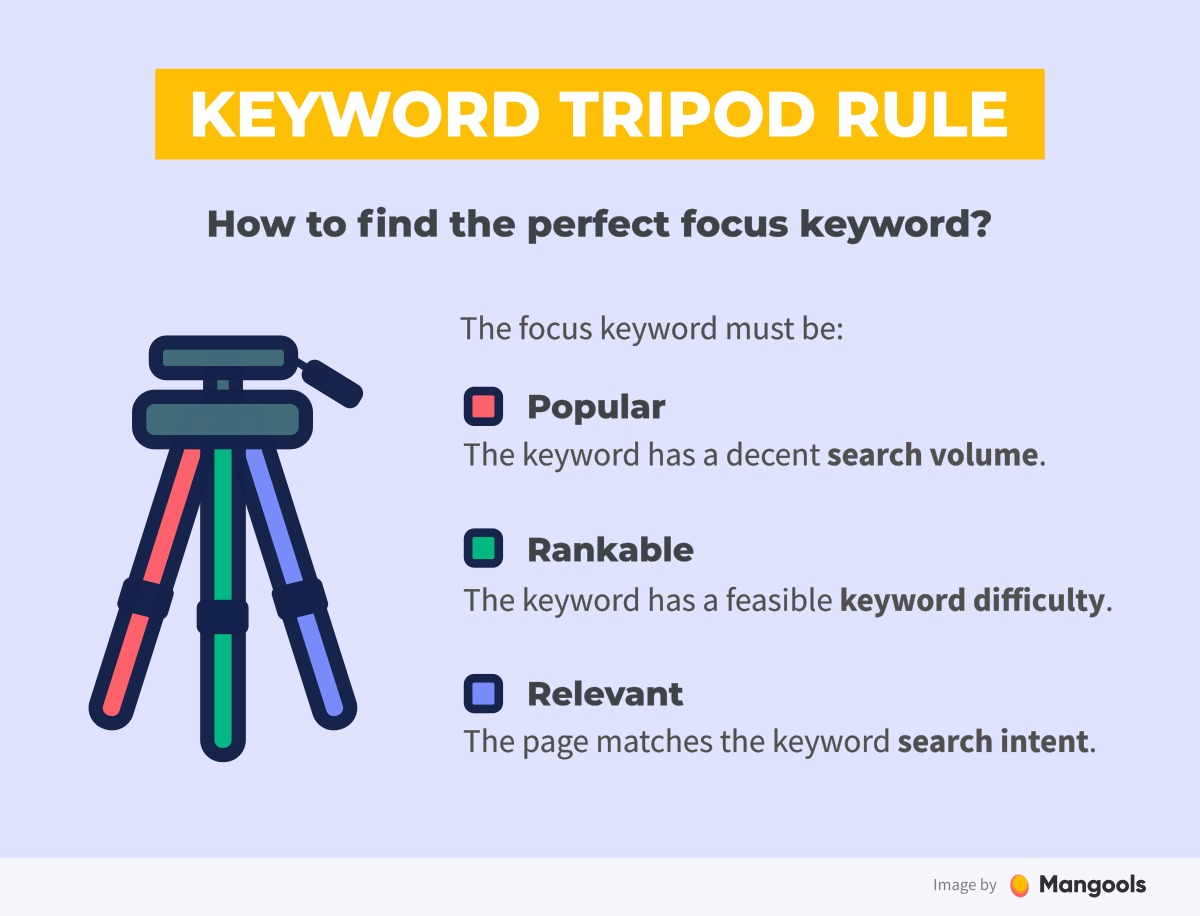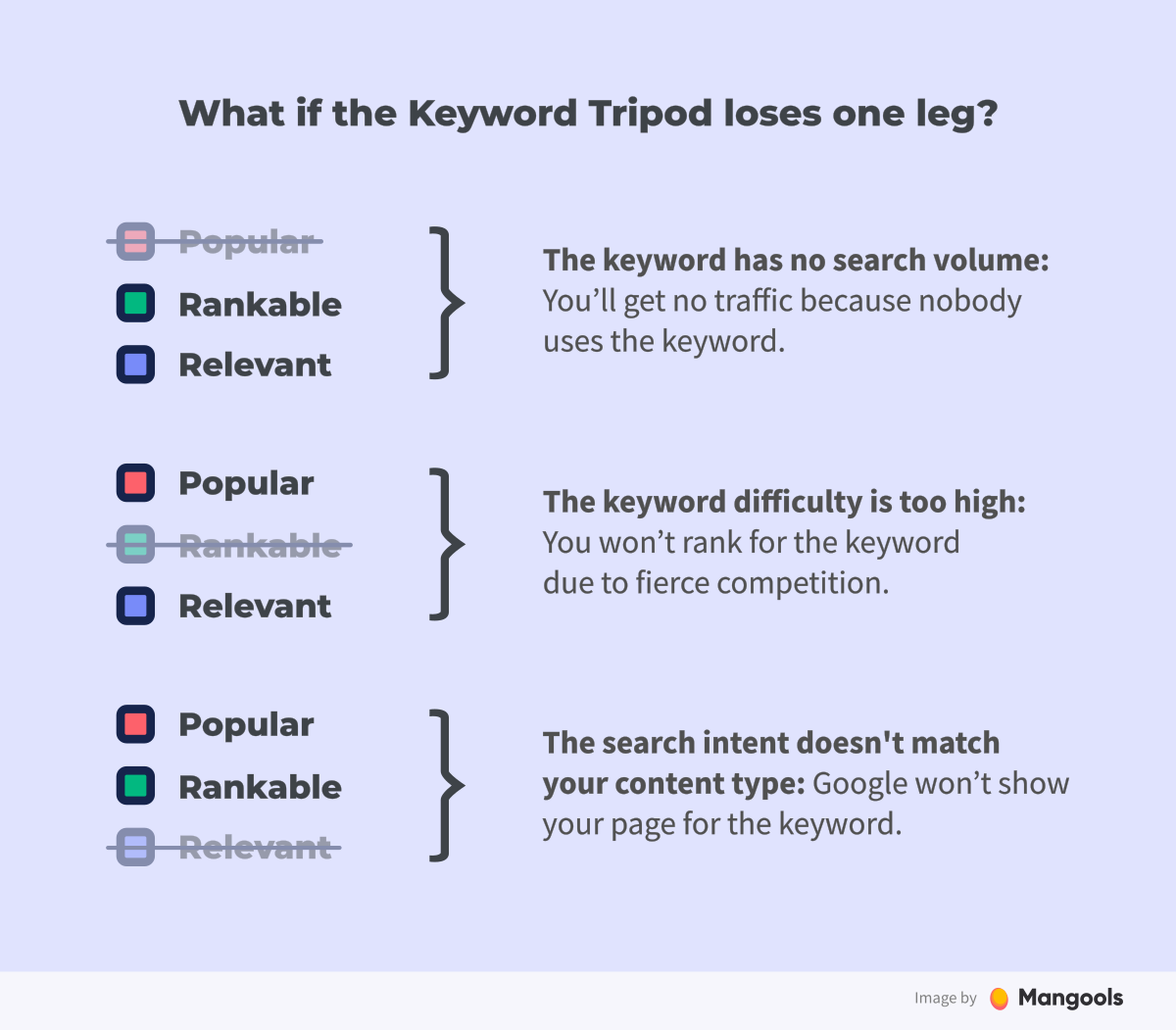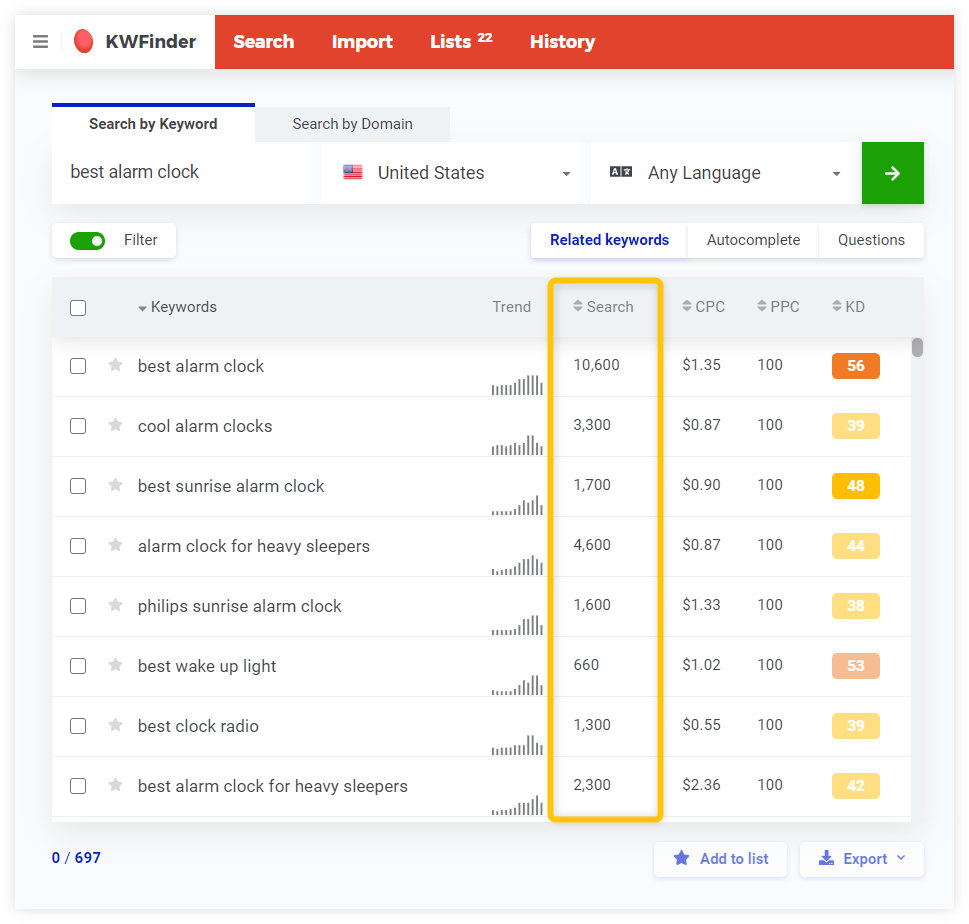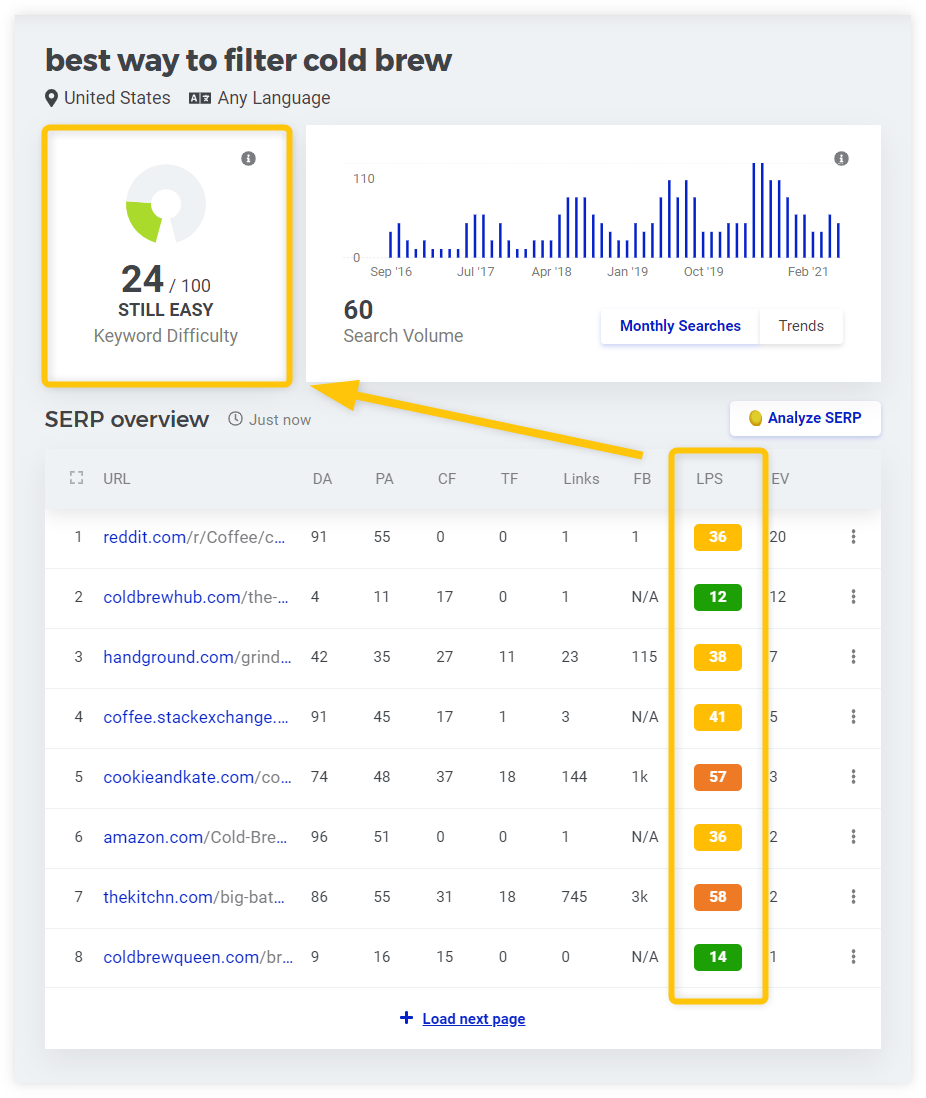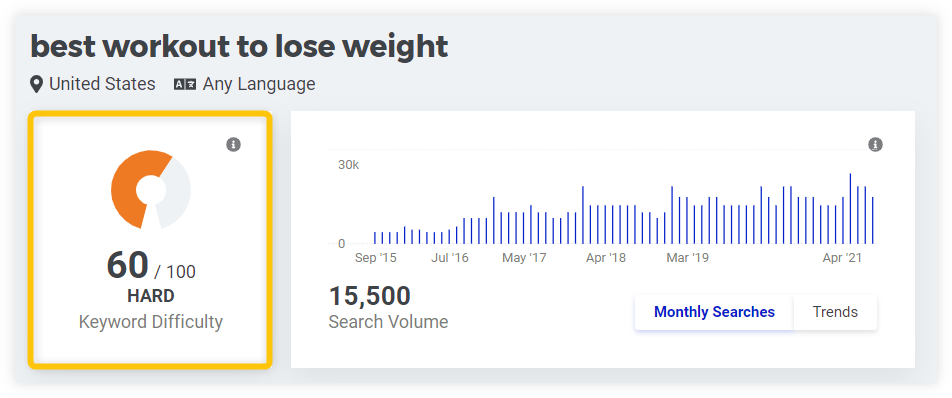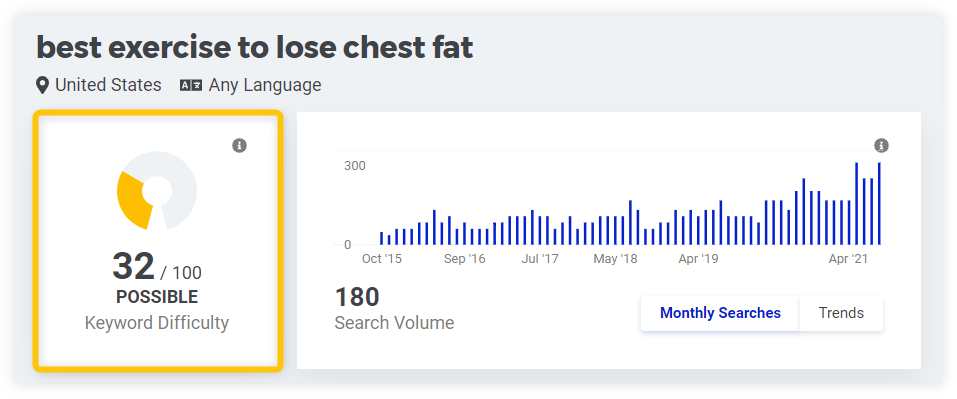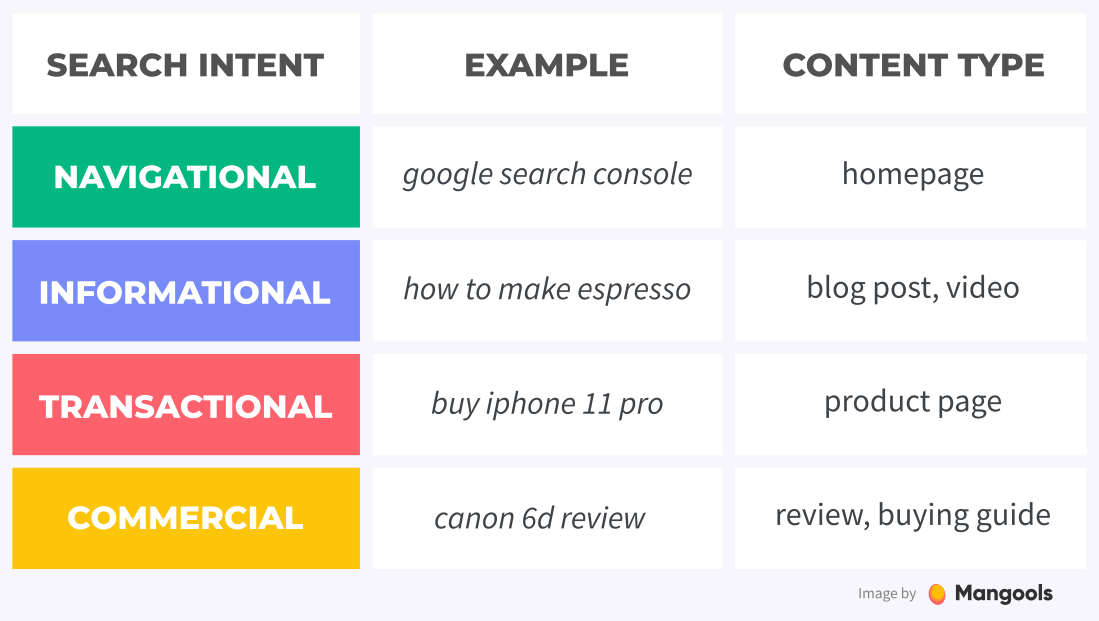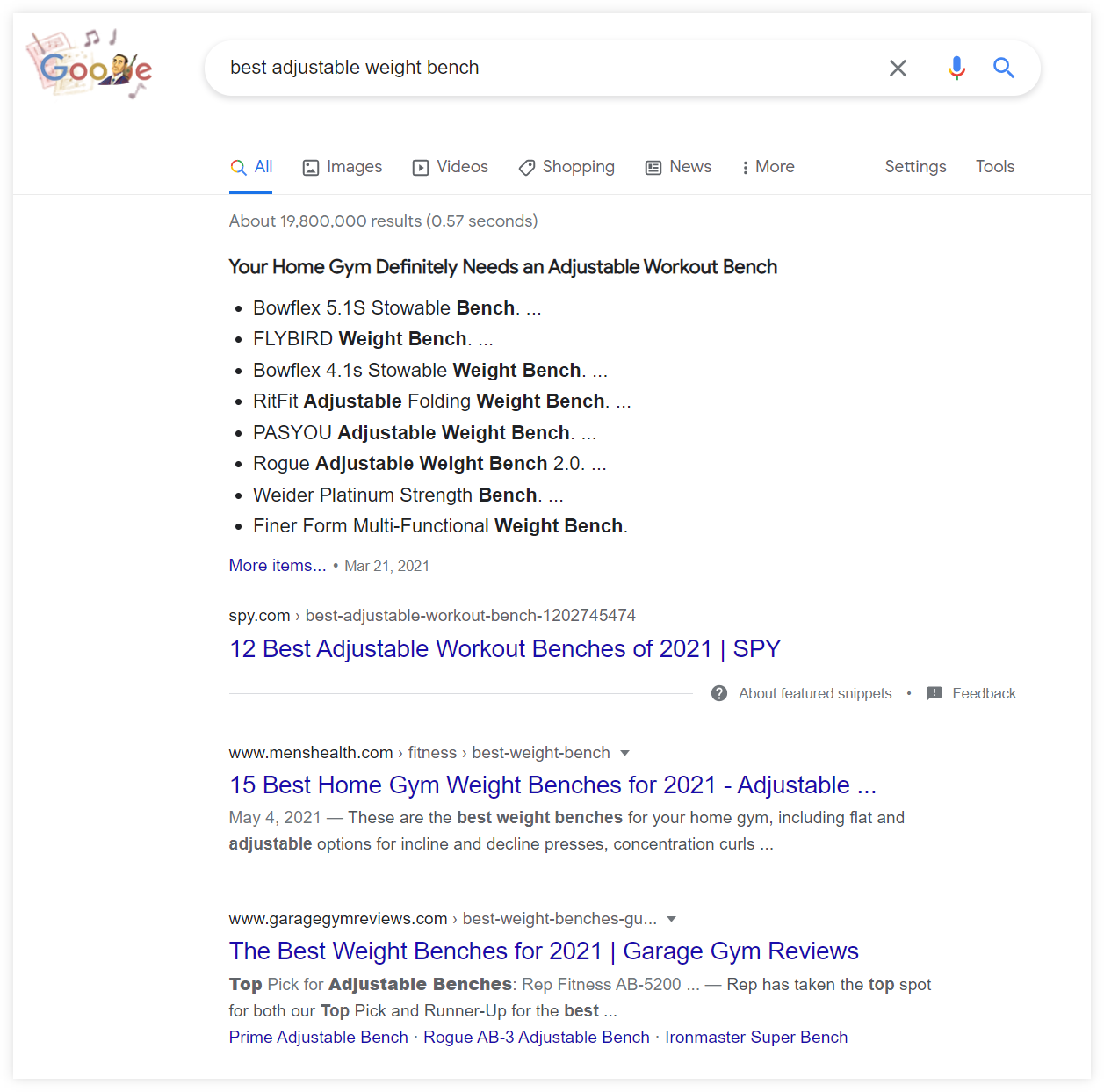[ad_1]
So you’ve opened a keyword research tool and found hundreds of keywords you could target.
Now what?
Keyword research is much more than just finding new keyword ideas. You need to analyze them and pick the ones you’ll actually use in your content strategy.
Luckily, there’s a simple rule that will help you remember the key factors you need to consider…The Keyword Tripod Rule.
What is the Keyword Tripod Rule?
The Keyword Tripod Rule is a simple rule you can follow when selecting the focus keyword for your page.
It reminds you of the three most important factors you need to consider in your keyword research – popularity, rankability, and relevance of the keyword.
The perfect focus keyword must be:
- Popular – the keyword has a decent search volume.
- Rankable – the keyword has a reasonable keyword difficulty.
- Relevant – the search intent matches your content.
What is a focus keyword?
The focus keyword is a keyword that is the best representation of the page’s topic. You use it in the key on-page elements to optimize your page to rank for the topic.
The best practice is to first find a good keyword and then create content for it rather than the other way round.
Why a “tripod”? Because the tripod stands steady only if all three legs stand steady.
The same applies to any keyword and the three factors mentioned above:
- If the difficulty is OK and the keyword is relevant but it has no search volume, you’ll get no traffic because nobody uses the keyword.
- If search volume and relevance are OK, but the difficulty is too high, you won’t rank for the keyword due to fierce competition.
- If a keyword has a high search volume and low difficulty but the search intent doesn’t match, Google won’t show your page for the keyword.
…we all know what happens to a tripod if you take one of the legs.
Now let’s take a closer look at each individual factor that comes into play in the Keyword Tripod Rule.
Search volume
Keyword search volume refers to how many times a keyword is searched for in a search engine during a certain time frame (usually a month).
The higher the search volume of the keyword, the more visitors you’ll get if you rank for that keyword.
Knowing the search volume helps you to:
- Compare and prioritize the keyword topics
- Estimate the traffic potential
- See the popularity of the topic from a long-term perspective
How to get the search volumes
The easiest way to see the search volumes of keywords is to use a keyword research tool.
Just enter your first keyword and the tool will show you its search volume and the search volumes of hundreds of related keywords. Alternatively, you can import your list of keywords.
Other things to consider
There are other things you should consider when looking at the popularity of the keyword beside the standard average monthly search volume.
- The long-term trend – it is always good to look at the interest in the topic from a longer perspective (Google Trends is a great tool for that, its data is included in KWFinder’s interface too)
- Seasonality – some keywords are naturally more popular during certain time periods (such as Christmas holidays, summer, etc.) – take it into account
What is a good search volume?
There is no minimum search volume you should aim at. If a keyword with a search volume of 50 is valuable for you, then 50 is a good search volume.
What’s more, the search volume is not the only parameter that determines the value of a keyword. You must consider the business potential too.
Look at these two keywords and their search volumes:
- how to play chess (71,900)
- Lord of the Rings chess set (3,800)
These are two very different keywords with different search intent and potential business value.
If you run a board games shop, the product-related keyword has probably a lot bigger business potential for you. Even though it has a much lower search volume than the general one.
Keyword difficulty
Keyword difficulty is an SEO metric that estimates how difficult it is to rank for a keyword, based on the authority of the websites that already rank for that keyword.
The higher the keyword difficulty, the harder it is to rank for that keyword.
The metric on a scale from 1 to 10 takes into account the link profile strength of each page on the 1st SERP for the given keyword. So if there are many high-authority websites, the assumption is that it is more difficult to rank for the keyword.
If, on the other hand, the result page contains websites with lower authority, we can assume it is should be relatively easy to rank for the keyword.
What is a good keyword difficulty?
The simple answer is: the lower the keyword difficulty, the better…
For example, let’s say you run a fitness blog and you come across a great keyword: best workout to lose weight. It has a huge search volume and it would be a great fit for your blog.
However, a quick look at the Keyword Difficulty will tell you that it is almost impossible to rank for the keyword unless you are a really authoritative website.
So it might be smarter to focus on less competitive, more specific keywords you actually have a chance to rank for.
In our case, it could be the keyword best exercise to lose chest fat for example.
The search volume is much lower, but the keyword also has a much lower keyword difficulty. So there’s an actual chance you could outrank the competition and rank for the keyword.
That being said, although the keyword difficulty metric helps you to get a quick insight into the level of competition for each keyword, you should not leave it at that…
Other things to consider
Always remember that it takes into consideration only one ranking factor – the number and quality of backlinks of your competitors.
There are other things that contribute to the equation:
- Subjective factors – Your own authority plays a crucial role, the more authoritative is your website, the less important the Keyword Difficulty metric is for you.
- Content quality – As mentioned above, the difficulty metric does not take into consideration the quality of the page’s content. A lower-authority website can outrank a high-authority website if the content is better.
- Search intent – Sometimes, there’s not enough content created for a specific topic. So Google ranks high-authority pages that only touch upon the topic lightly. If you target the topic directly and satisfy the search intent better, you may easily outrank them.
The last point is closely connected to the third important factor of the Keyword Tripod Rule – the relevance of the keyword.
Let’s take a look.
Search intent
Search intent is the reason behind a searcher’s query. It is a crucial, yet often overlooked factor in keyword research.
While search volume and keyword difficulty help us quantify the popularity and rankability of a keyword, search intent helps us recognize whether the keyword and our content match together.
There are 4 most commonly recognized search intent types:
- Navigational – the user is searching for a specific website/brand
- Informational – the user is searching for general information
- Transactional – the user wants to buy something online
- Commercial – the user wants to do the research before purchase
Why is search intent important
Let’s say you run an e-commerce store with workout equipment. You want to optimize your product page featuring the most popular adjustable workout bench on the market.
And you find a perfect focus keyword – “best adjustable weight bench”. It has a solid search volume and the competition is not that high. Yet, you’ll never manage to rank for the keyword with your product page.
Why?
Because the search intent behind the keyword does not match your content. The keyword “best adjustable weight bench” is not a transactional keyword – people don’t want to find a specific product but reviews of the best products in this category.
A quick look at the actual SERP results will show you the same:
The keyword has a commercial intent – the search engine shows the top lists and reviews as the top results.
Although the first two tripod legs (popularity and rankability) stand steady, you won’t find the perfect focus keyword unless you pay attention to the relationship between the type of keyword and the type of content.
How to identify the search intent?
Sometimes it’s hard to guess the search intent behind a keyword.
If someone searches for home gym, they may be looking for home gym ideas (informational intent) or they may want to buy home gym equipment (commercial intent).
Search engines deal with the same struggle. They don’t always know the search intent with 100% accuracy but they do their best to serve results that will most probably satisfy the user based on the large amount of data they have.
The best way to find out the search intent behind a search phrase is to follow these steps:
- Look at the search results
- Scan the top 10 pages
- Identify the most common type of content
For example, if you look at the SERP and all the pages that rank there are review articles, you can safely say that the keyword has a commercial intent and you have the best chances of ranking for it if you create the same type of content.
[ad_2]
